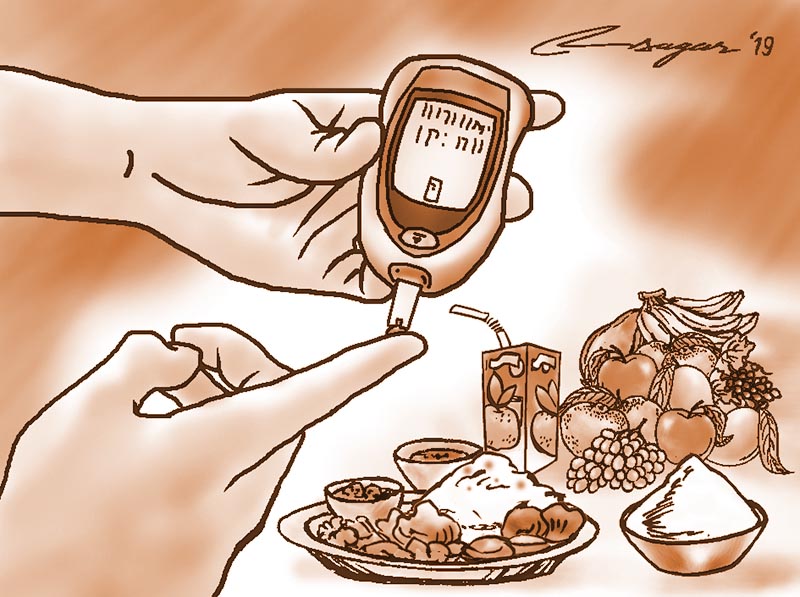‘Unhealthy lifestyle fuels diabetes prevalence’
Kathmandu, November 13
Around 60 per cent of patients who visited endocrine department at Bir Hospital were diagnosed with diabetes.
Of the 250-odd patients, who visited the department, when the department was operational, some 144 had been found to be suffering from diabetes. Out of these patients 50 per cent were below 40 years of age. The department at the hospital has been providing services for three days a week.
Around eight years ago, the department, which has been treating endocrine diseases including hormone imbalances, thyroid and diabetes, provided its service once a week. Back then only eight patients of total 30 visiting the OPD used to be diagnosed with diabetes.
“Unhealthy diet, lack of physical activities, consumption of alcohol and tobacco products, stress, obesity and changing lifestyles are to be blamed for the rising number of diabetic patients,” said Dr Buddha Bahadur Karki at the hospital. Compared to the people living in villages, people living in urban areas were more prone to diabetes. The first representative study on prevalence of selected chronic diseases in Nepal conducted by the Nepal Health Research Council with support from the Ministry of Health and Population, revealed that diabetes was more than double (11.3 per cent) among urban participants compared to rural participants (5.5 per cent).
“People in urban areas have been working indoors, consuming junk food and remain physically inactive,” said Dr Karki.
The report has also revealed that the prevalence of diabetes was more in men than in females, 11 per cent and 6.7 per cent, respectively. Across provinces, prevalence of the disease ranged from 3.2 per cent in Karnali Province to 11.5 per cent in Province 3.
Though there was high prevalence of diabetes, people were ignorant of the disease. “Diabetes patients visit hospitals only when there is an excessive rise of blood sugar level. It will be easy to reduce blood sugar level if they started taking medicine at early stage of the disease,” said Dr Karki.
Symptoms of diabetes included weight loss, excessive thirst and hunger, frequent urination and slow healing of wounds.
Diabetes can be avoided by consuming healthy food and through adequate physical activity. It can be controlled through diet modification, along with medication.
“Diabetic patients should consume food with low glycemic index such as green leafy vegetables, citrus fruits, legumes, pulses, milk and milk products, according to Jaya Pradhan, nutritionist and professor at Central Department of Home Science, Tribhuvan University. Diabetes mellitus is the second most prevalent non-communicable disease (8.5 per cent) after chronic obstructive pulmonary disease (11.7 per cent) across the country, according to the Nepal Health Research Council report. Left untreated, diabetes could lead to life-changing complications such as loss of vision, diabetic foot ulcers, diabetic kidney and neuropathy, a condition that affects activities of nerves, infections, heart attack and stroke, said Dr Karki.
World Diabetes Day is celebrated each year on November 14. The theme for this year is, ‘Family and Diabetes.’






